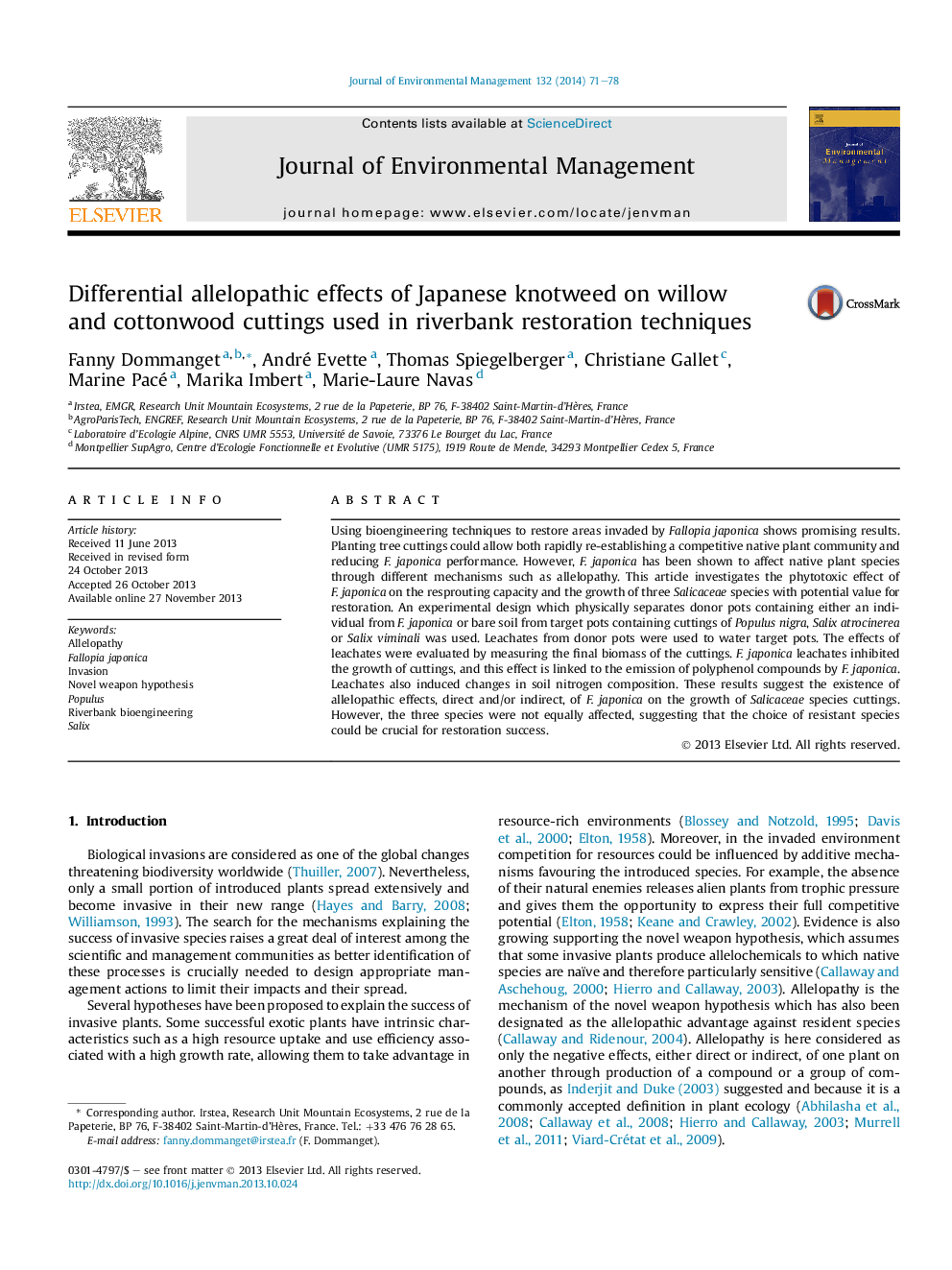| کد مقاله | کد نشریه | سال انتشار | مقاله انگلیسی | نسخه تمام متن |
|---|---|---|---|---|
| 1055782 | 1485280 | 2014 | 8 صفحه PDF | دانلود رایگان |
• Cuttings were grown under Japanese knotweed using a target-donor pots experiment.
• We followed knotweed polyphenol production during the experiment.
• Japanese knotweed phytotoxic effect reduced final biomasses of cuttings.
• The three species tested differed in their sensitivity to knotweed effect.
• Knotweed allelopathy was mediated by polyphenol and/or change in soil properties.
Using bioengineering techniques to restore areas invaded by Fallopia japonica shows promising results. Planting tree cuttings could allow both rapidly re-establishing a competitive native plant community and reducing F. japonica performance. However, F. japonica has been shown to affect native plant species through different mechanisms such as allelopathy. This article investigates the phytotoxic effect of F. japonica on the resprouting capacity and the growth of three Salicaceae species with potential value for restoration. An experimental design which physically separates donor pots containing either an individual from F. japonica or bare soil from target pots containing cuttings of Populus nigra, Salix atrocinerea or Salix viminali was used. Leachates from donor pots were used to water target pots. The effects of leachates were evaluated by measuring the final biomass of the cuttings. F. japonica leachates inhibited the growth of cuttings, and this effect is linked to the emission of polyphenol compounds by F. japonica. Leachates also induced changes in soil nitrogen composition. These results suggest the existence of allelopathic effects, direct and/or indirect, of F. japonica on the growth of Salicaceae species cuttings. However, the three species were not equally affected, suggesting that the choice of resistant species could be crucial for restoration success.
Journal: Journal of Environmental Management - Volume 132, January 2014, Pages 71–78
